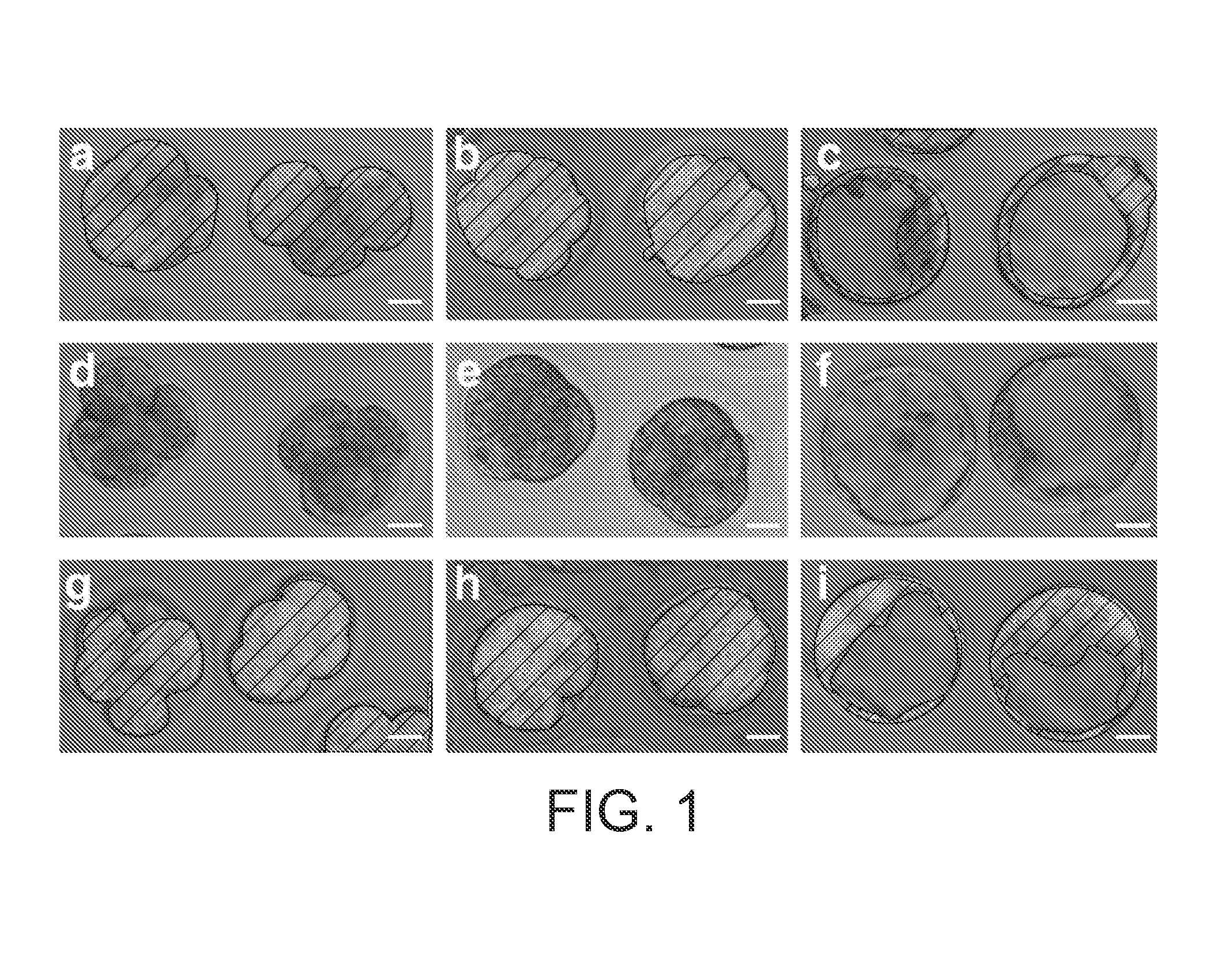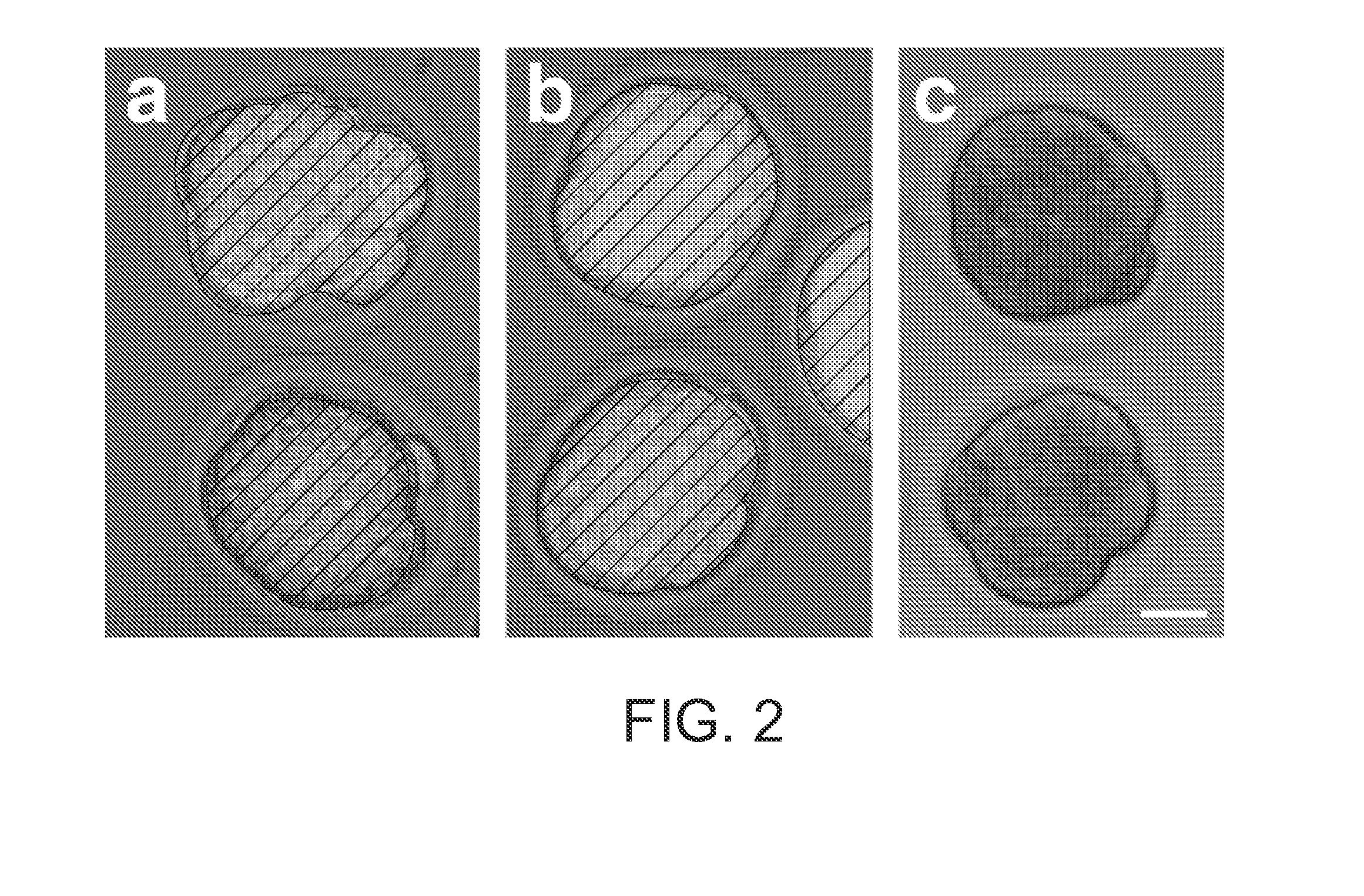Inhibiting Gene Expression with dsRNA
a technology of gene expression and inhibition, applied in the field of inhibiting gene expression, can solve the problems of denying an understanding of everything but the first event, unable to understand the first event, and the existence of “knockout” technology is also extremely laborious, so as to inhibit the expression of a target gene
- Summary
- Abstract
- Description
- Claims
- Application Information
AI Technical Summary
Benefits of technology
Problems solved by technology
Method used
Image
Examples
example 1
dsRNA Prevents gfp Transgene Expression
[0077]To determine whether dsRNA might be used to prevent gene expression in the mouse embryo, we developed an experimental test system using a transgenic strain of mice that expresses MmGFP under the control of the Elongation Factor 1 α (E1Fα) promoter (Zernicka-Goetz, M. in Cell lineage and fate determination (ed. Moody, S. A.) 521-527 (Academic Press, San Diego, Calif., 1999)). This line offered the advantage that GFP expression can be easily visualised in living embryos and, because its function is non-essential, we could monitor any non-specific deleterious effects of dsRNA on embryonic development. In order to avoid the complication of perdurance of maternal gene products, we used heterozygous embryos in which the transgene was paternally derived. The onset of GFP expression in these embryos is seen by the appearance of green cells following the initiation of zygotic transcription at the two cell stage.
[0078]We were able to demonstrate th...
example 2
Phenocopying an E-Cadherin Knockout
[0081]We assessed the specific developmental consequences of injecting E-cadherin dsRNA. E-cadherin is both maternally and zygotically expressed during pre-implantation development. Disruption of the E-cadherin gene, using homologous recombination to remove regions of the molecule essential for adhesive function, leads to a severe preimplantation defect. These embryos can initially undergo compaction, due to the presence of maternally expressed E-cadherin. However, they show a defect in cavitation and never form normal blastocysts (Larue, et al. Proc Natl Acad Sci USA 91, 8263-8267 (1994); Riethmacher, et al. Proc Natl Acad Sci USA 92, 855-859 (1995)).
[0082]We observed that following injection of E-cadherin dsRNA, the phenotype was identical to that of null mutant embryos. Thus, the embryos initially developed normally to the compaction stage of the morula (data not shown). However, only about 30% were able to cavitate, and formed the so called “cy...
example 3
dsRNA Interference in the Oocyte
[0085]In order to determine whether dsRNA might be used to interfere with maternally expressed genes, we sought a model gene having a characteristic knockout phenotype. C-mos is an essential component of cytostatic factor, responsible for arresting the maturing oocyte at metaphase in the second meiotic division. In c-mos − / − mice, between 60 and 75% of oocytes do not maintain this metaphase II arrest and initiate parthenogenetic development (Colledge, et al, Nature 370, 65-68 (1994); Hashimoto, et al. Nature 370, 68-71 (1994)). C-mos mRNA is present in fully grown immature oocytes, and its translation is initiated from maternal templates when meiosis resumes following germinal vesicle breakdown (Verlhac, et al. Development 122, 815-822 (1996)). Thus, injection of c-mos dsRNA would allow us to test whether dsRNA could interfere with maternal mRNA expression.
[0086]When we injected c-mos dsRNA into oocytes, about 63% did not maintain arrest in metaphase ...
PUM
| Property | Measurement | Unit |
|---|---|---|
| pH | aaaaa | aaaaa |
| pH | aaaaa | aaaaa |
| concentration | aaaaa | aaaaa |
Abstract
Description
Claims
Application Information
 Login to View More
Login to View More - R&D
- Intellectual Property
- Life Sciences
- Materials
- Tech Scout
- Unparalleled Data Quality
- Higher Quality Content
- 60% Fewer Hallucinations
Browse by: Latest US Patents, China's latest patents, Technical Efficacy Thesaurus, Application Domain, Technology Topic, Popular Technical Reports.
© 2025 PatSnap. All rights reserved.Legal|Privacy policy|Modern Slavery Act Transparency Statement|Sitemap|About US| Contact US: help@patsnap.com



